
To find out if you could benefit from a garden shed, ask yourself: Do my growing number of garden tools need a new home? There’s your answer. Having clean tools, which all have their place, will elevate these feelings of contentment, too.
Let’s get practical for a moment. Garden tools take up space.
Sometimes, they take up a lot of space; other times, not so much. Obviously, it depends on how involved you are in gardening. Or how much you plan to be.
When you get to choose a new garden shed, it’s wise to know what sort of tools you’ll be storing.
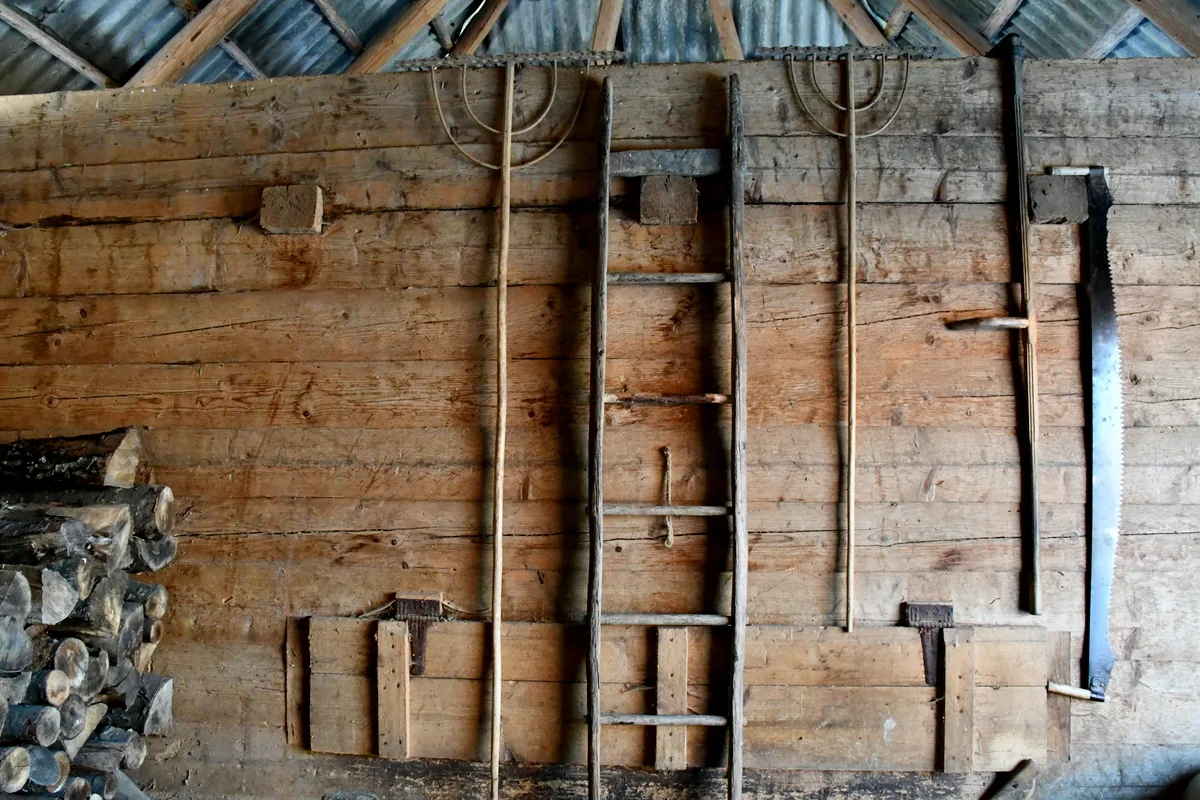
So, what goes in a gardening shed?
Let’s make a quick list. Go ahead and tick them off in your mind as you scroll through:
- shovels
- spades
- rakes
- hand tools
- pruners
- tomato cages
- mowers and blowers
- trash bags
- work gloves
- bird feed and feeders
- pots and containers
- old potting soil
- fertilizer
- twine and ties
- hoses
- watering cans
- brushes
- outdoor furniture you currently aren’t using
How many tools came to mind as you read the list?
If you are in the market for a new garden shed, my advice would be to first take an inventory of all your garden tools as you write them down on a sheet of paper.
You wouldn’t like to build a shed, only to find out that there isn’t sufficient space for your lawnmower – that is unless you are ready to get rid of your lawn altogether. That’s a more extreme scenario. For the moment, let’s stick to the task at hand – choosing the best garden shed for you and your garden tools.
How Big Should a Garden Shed Be?
Adding a garden shed to your property could very well be a long-term investment. But it doesn’t have to be. When you plan it right, you can make the garden shed a permanent feature on your property, or you can choose something lighter weight that will fulfill the job for only a couple of years.
The smallest garden sheds might only set your wallet back a few hundred dollars, whereas bigger sheds with lots of luxurious shelving could run into the thousands.
Trying to determine the price always brings us back to size and materials.
How much space do you need for your garden tools?
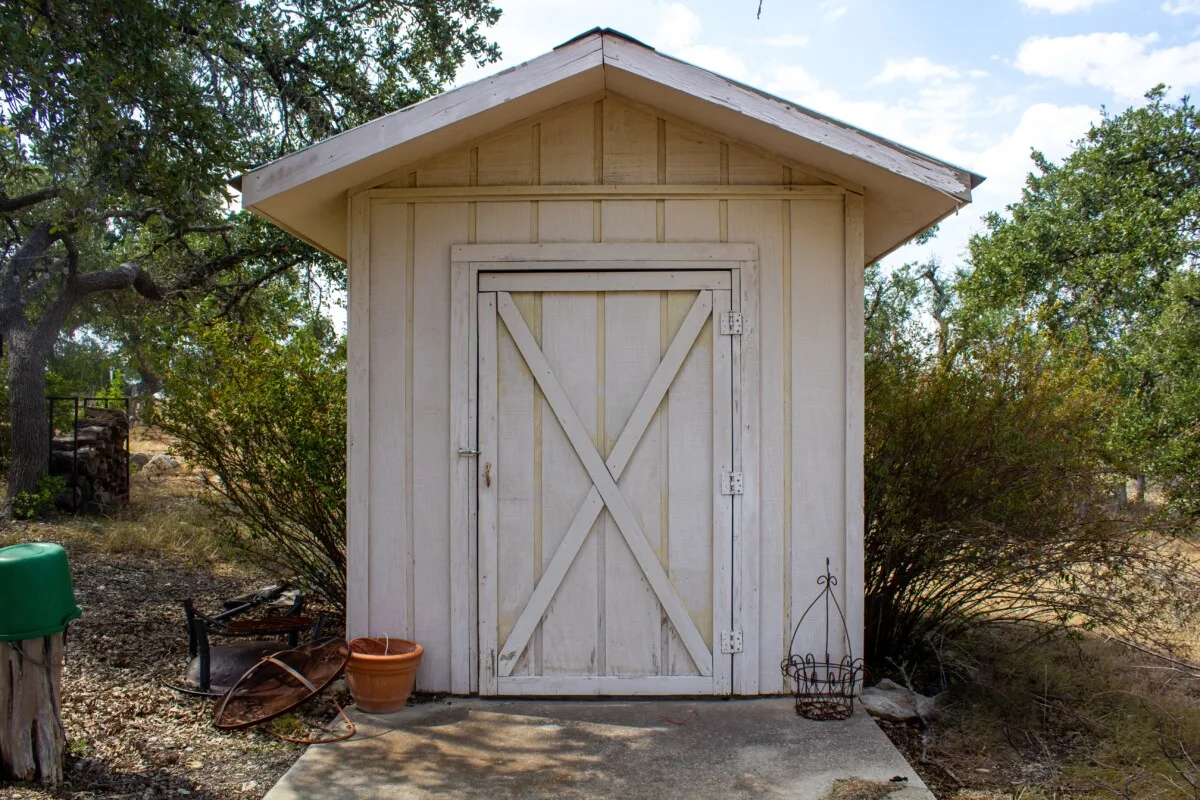
As mentioned above, it’s useful to know how much space your garden tools take up (including how many more you plan to purchase) before committing to a plan.
- Garden sheds for small yards range from 4′ x 2′, which is perfect for a selection of hand tools all the way up to 8′ x 4′. The former is more like a tool closet, and the latter looks more like a traditional shed with a door that allows a lawnmower to be pushed in and out.
- Garden sheds for medium yards generally start at 6′ x 6′ and go up to 8′ x 8′ in size. In the larger size, they almost start to act as she sheds or small artist studios. Choose the right materials, and they can go either way.
- For large yards, most prefabricated sheds go all the way up to 12′ x 12′. Now we’re talking about a lot of space to fill, as well as thousands of dollars to build it or set it up.
But in the case of garden sheds, bigger is not necessarily better. It’s your organizational skills, shelves and hooks that will make all the difference in the world.
If you still aren’t sure what size will suit your needs, grab a tape measure and head outside to the spot where you imagine your garden shed residing. It’s a great way to visualize it if you are having difficulty knowing how much space your shed will take up.
Should You Build Your Own Garden Shed or Buy a Shed?
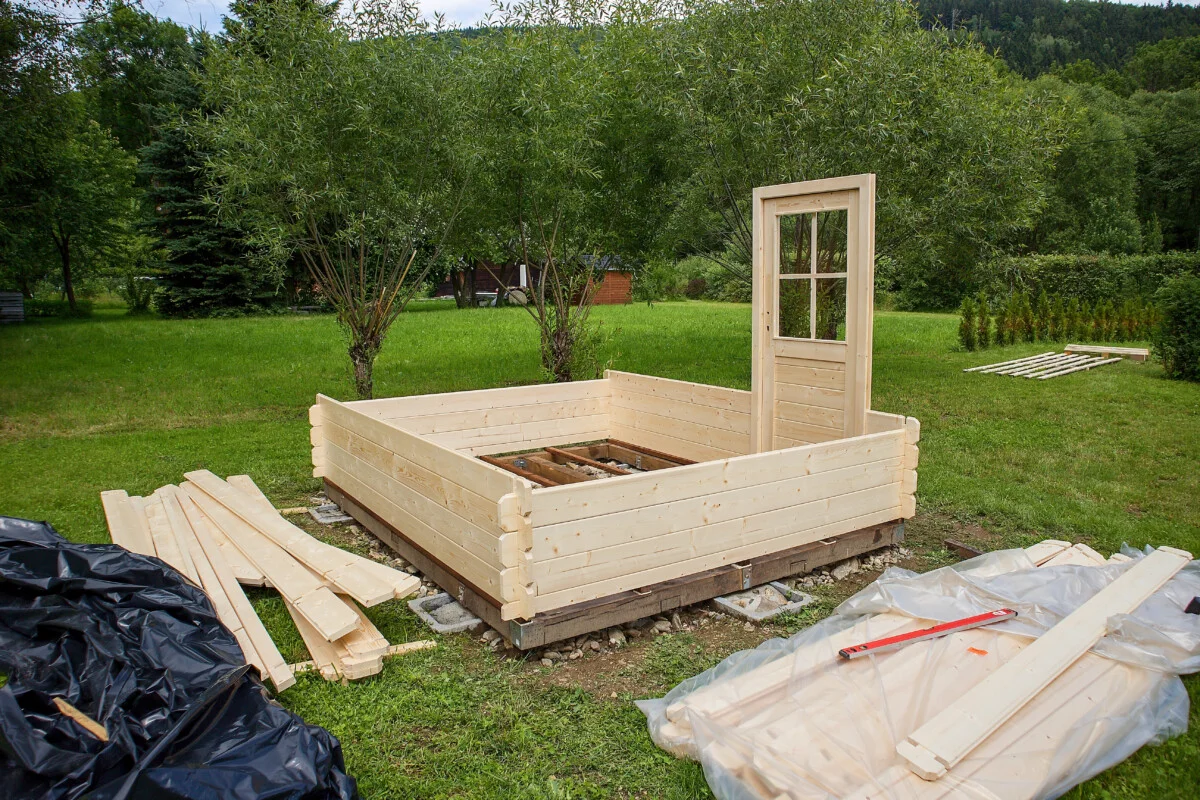
The choice to build your own garden shed or opt for one ready to put together is an easy one.
If you have the tools at hand and the experience working with them, then the DIY route is probably the best option for you. Building your own garden shed allows you more control over choosing materials; it also gives you creative freedom.
However, if the building of a garden shed would entail buying lots of tools to complete the project, then an almost-ready-made one is probably a better option. While buying a shed often costs more money, it also saves you time. If you’re someone who is ready to get started right away, go ahead and splurge – there are many prefab garden sheds out there to choose from. Will list a few sites to check out in just a minute.
Homemade Garden Shed Plans
First things first, you need to decide where that new garden shed of yours is going and how much space you can commit to an outbuilding. Then, dive deeper and find out what kind of foundation it needs and how permanent you want the structure to be.
At the same time, you’ll also need to check local building codes for setbacks. After all, you wouldn’t want to build it, only to move it later. Find more on permits later in this article.
It isn’t necessary to know exactly how it should look at first, with a gable roof or a smaller shed with a lean-to style roof. But, you should look around for inspiration. Pinterest is a great place to start your search.
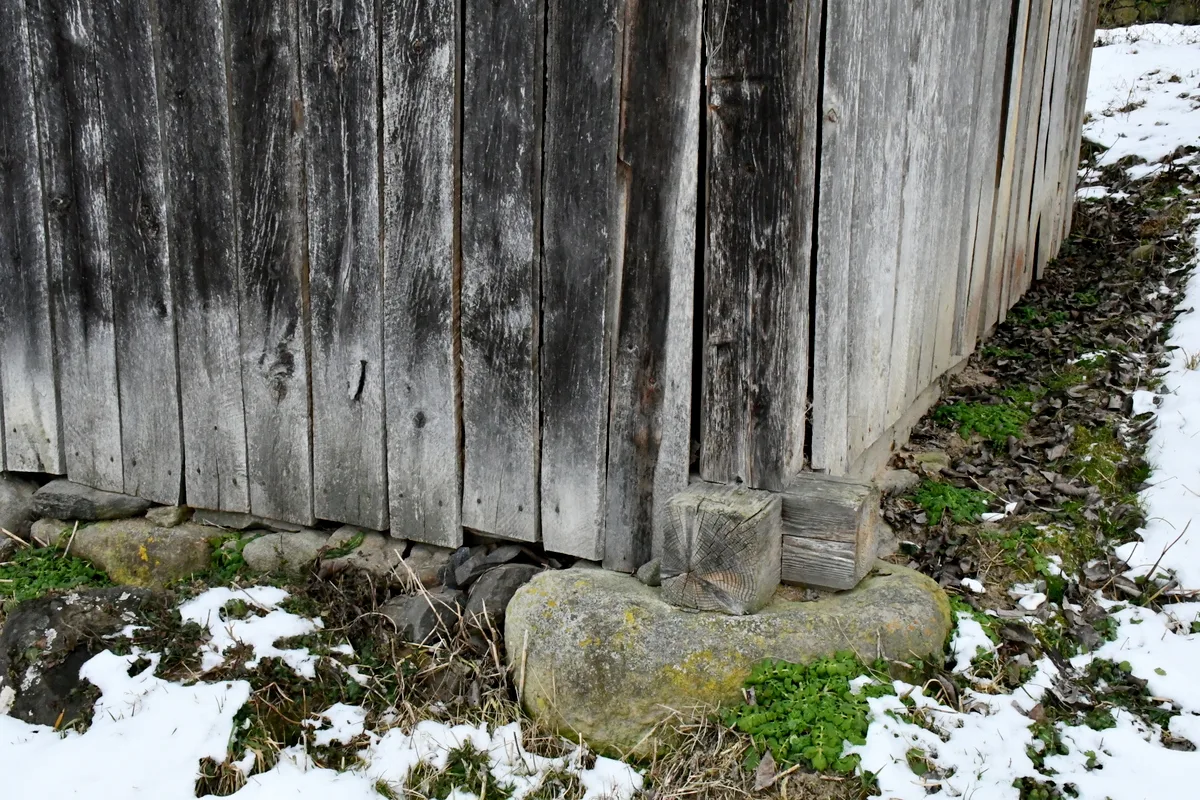
Sheds can range from fairytale-like all the way to plain and pragmatic. All you have to do is build something that is pleasing to you.
One thing a garden shed should do, however, is last for a long time.
Here are some ideas to help you get started with choosing the best garden shed:
- DIY Cedar Garden Shed – No Kit & Built in a Weekend! – Stacy’s Savings
- Garden Shed Plans – Build Blueprint
- How to Build a Shed on the Cheap – Family Handyman
- DIY Shed Design Ideas – How To Build A Garden Shed from Scratch – Home Edit
- How to Build Your Own Shed from Scratch w/ Plans – Wood Create
Prefab Garden Sheds
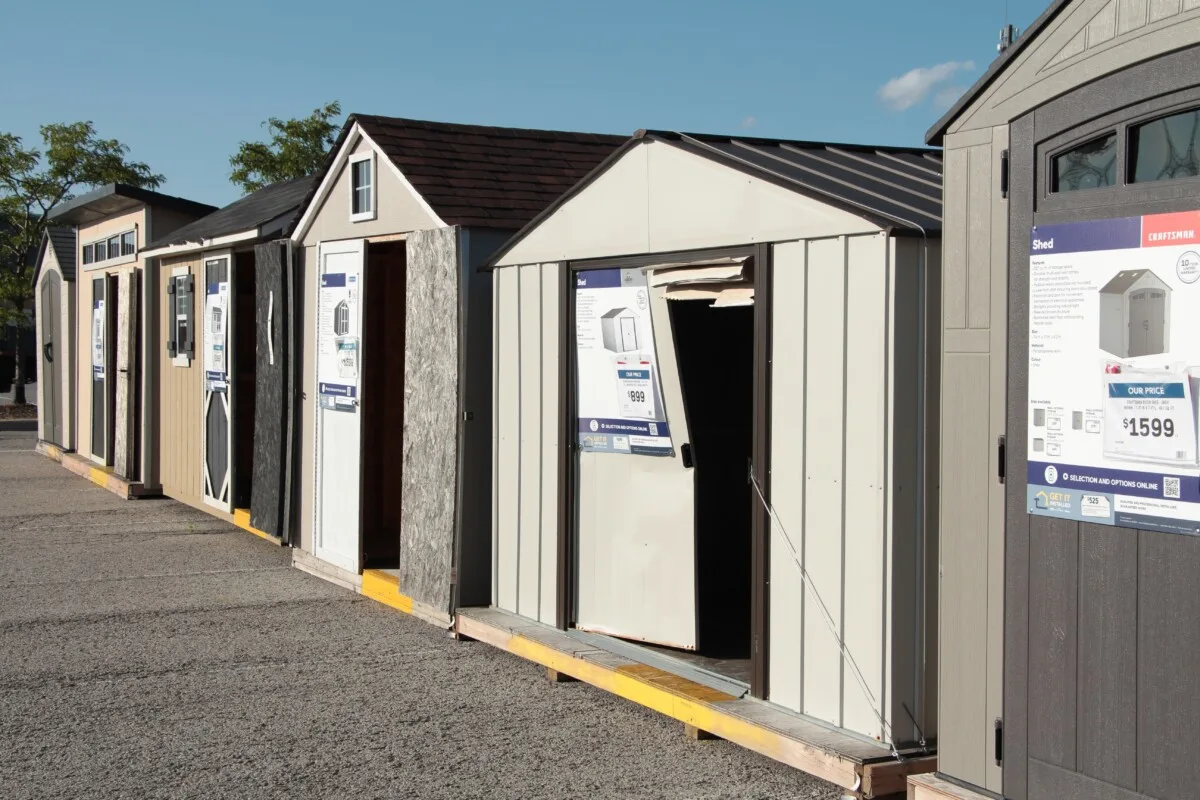
If you have more money than time and tools, it’s wise to take a look at what’s already out there on the market, so you can organize and get your garden growing faster.
We’ve already mentioned that it’s going to cost you more, so don’t be surprised at a price tag of thousands, plus shipping costs. However, prefab garden sheds come with materials that are precut and ready to put together with simple tools, which most homesteaders already have. Assembly comes in the form of your own manual labor, yet there is a community or family building to that aspect, too.
Whether you are building from scratch or buying a garden shed online, watch out for these 7 things:
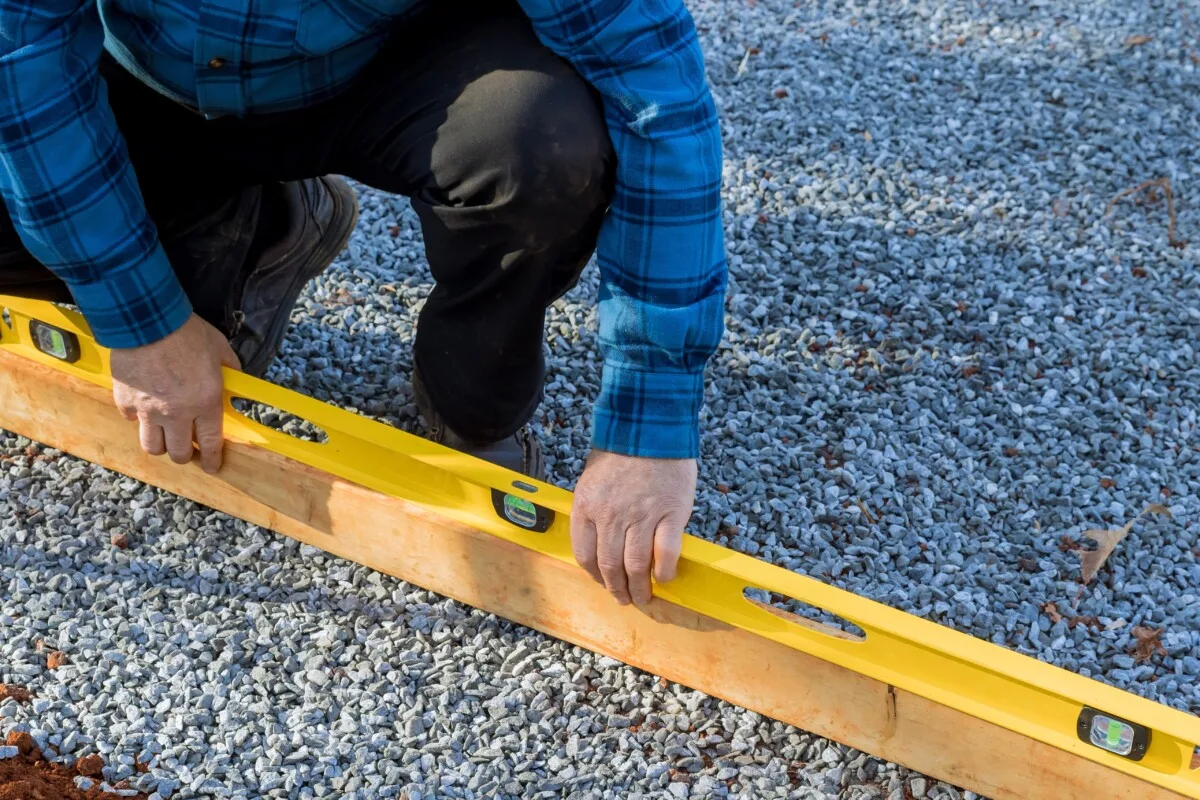
- Floor space – Will there be enough room for shelves as well as fitting in other larger equipment? If you are good at visualizing, this won’t be a problem, but if you need more guidance, try to step into a ready-made shed in person.
- Height – Will you be able to fully stand up in the shed, or will you be bending your neck? The latter may not be a problem if it’s more of a garden tool closet, but if you need to spend more time in there, imagine how difficult it is to be productive in a tent.
- Entryway – If the shed doors are too narrow, it’s going to be a challenge to get a lawnmower in. Depending on the location of the shed, double doors and/or a ramp may be necessary for riding mowers.
- A source of light – Is natural light important? If so, then a window can provide some daytime light. It does reduce some storage space, yet it makes finding things in the shed a lot easier.
- Shed foundation – Naturally, you can’t just plop the garden shed on top of the soil; there’s more to it than that. The base of your shed can be gravel, concrete or masonry blocks.
- Flooring – Choosing flooring for your shed sounds like it could be easy, but there’s really a lot to consider. Read this in-depth article to find out more about shed flooring options.
- Insulation – Will this garden shed of yours need to be heated in winter months, or are you okay with letting in the cold?
If you need a garden shed but don’t have the skills to build it or put it together, another option between the two would be to have a local woodworker/carpenter/friend build it, or put it together, for you.
Prefab garden shed designs to consider:
Besides the sampling below, you can also find garden shed kits on Amazon and at stores like Lowe’s and Costco.
- Garden Sheds from Summerwood Products
- Storage Shed Kits from Yard Craft
- Cedar Shed Kits by Cedar Shed
- Garden Sheds from Polhus (UK)
After looking at many of these garden sheds for sale, all I can say is that I have my eye on at least 3 of them. Now, if only I needed a shed!
At the moment, our barn is large enough for our few gardening tools, a wheelbarrow, firewood and cross-cut saws.
What Materials Make the Best Garden Shed?
The basic materials that sheds are made out of are wood, metal or some sort of composite/plastic.
Which one appeals to you at first hearing? That’s most likely the shed material that’s going to work out the best for you.
These three options will give you a good range of budget, indoor organizational space and outdoor aesthetics.
Let’s start by looking at the benefits of metal sheds.
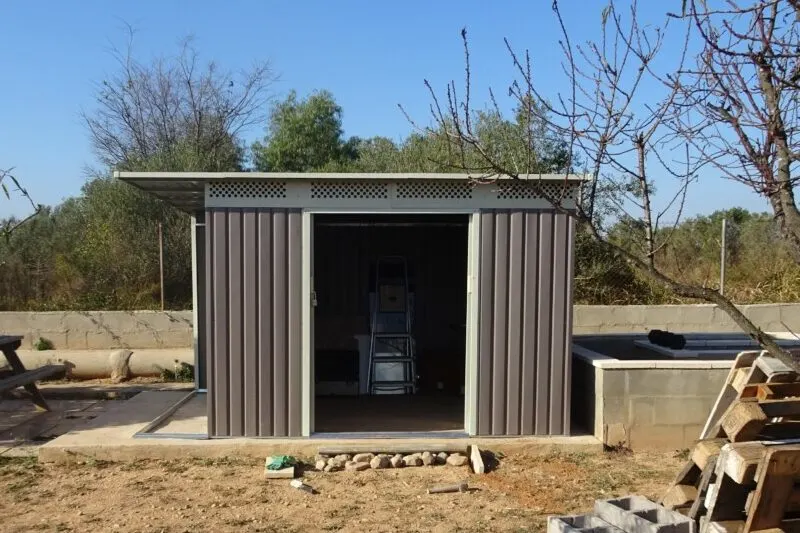
Metal sheds are generally considered durable where good quality is concerned. Unless you have the tools for cutting metal, however, these are going to be prefab jobs.
Still, they are often cheaper than wood, they won’t rot, they’re often rust- and corrosion-resistant, and they’ll pretty much stand out in the elements of nature for several years without intervention. No repainting, not even a drop of pest control. If you are in the habit of storing valuable tools, you’ll definitely want to consider planting a metal garden shed on a good foundation in your backyard.
On average, a metal shed will last well over 10 years. You can make that up to 25 years with little maintenance and a little bit of luck.
There must be some cons to installing a metal shed, right?
For starters, most people find metal sheds less attractive in the landscape. Perfunctory as they are, that’s probably true.
Because of the material at hand – metal, most people won’t have the skills or the tools to customize shelving, racks, etc., let alone to put it up without hiring someone skilled in the trade. Bits may need welding; you might even need to bring in an angle grinder, plus those sharp edges!
I know someone who has a knack for cutting himself on every sharp edge he finds. A metal shed isn’t for everybody. But it may be for you. Consider them budget-friendly and low-maintenance, plus they come in a range of sizes for every backyard and farm.
The Good and Not-Too-Bad of Wood Sheds
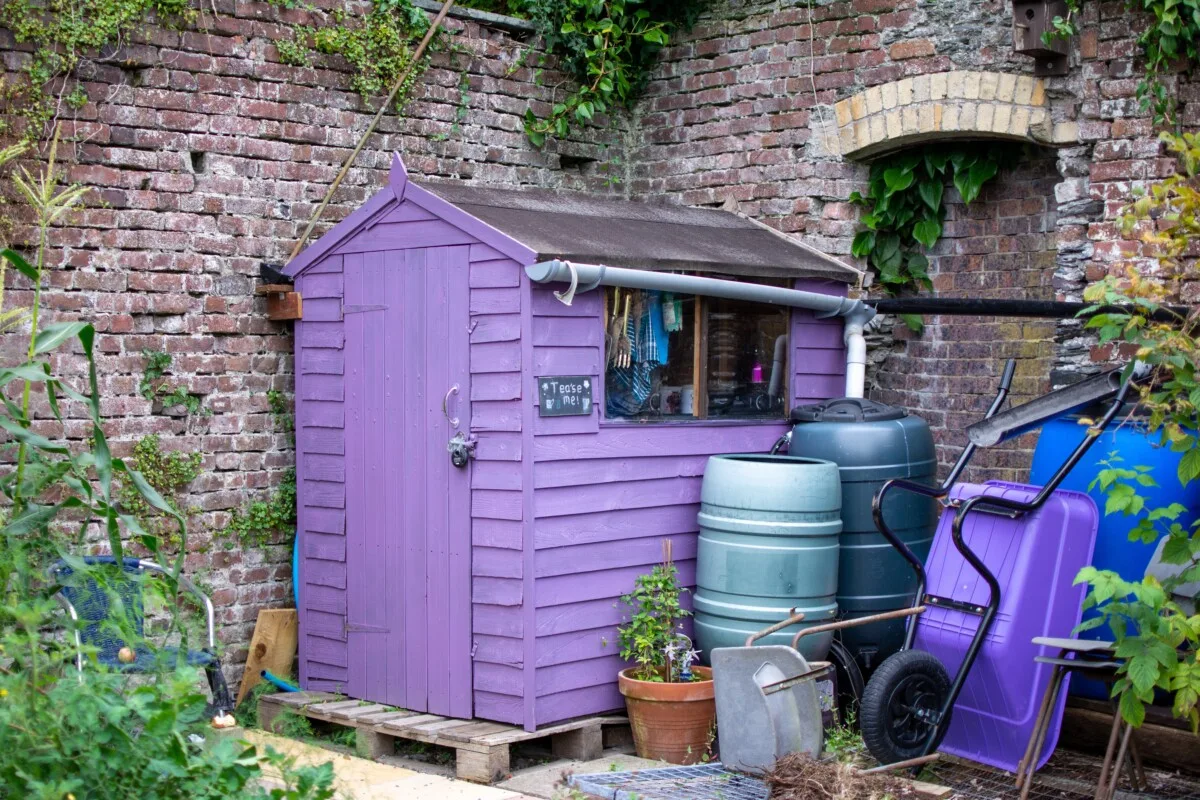
Wood sheds are by far the best-looking sheds out there, but you don’t have to take my word for it; just look around.
Beyond appearance, wood sheds are the easiest of the three types of sheds to assemble, even for DIY beginners. Wood, being a natural insulator, will make them cooler in summer and warmer in winter, as opposed to a metal shed, which heats up in summer and freezes in winter. A side bonus is, that when you make a custom-built shed, you get to choose the thickness of the wood.
The cheapest way to build a wood shed is with overlap cladding, wherein the boards are attached to a timber framework. A word of caution: wood will often warp, leaving air gaps in between the boards. It’s a free source of airflow, but it also allows insects and rodents passages to play in.
A sturdier version of a wooden shed will use shiplap cladding. These shiplap panels overlap (instead of interlock) for a more defined finish, with protection from the elements.
Finally, the strongest and longest-lasting wooden sheds use tongue and groove interlocking timber boards. This, by sheer design, will make the walls tough and hard to break into. At the same time, the tightness protects your tools from rain, draughts and moisture.
If you want to find out more about cladding options, this article will clad you with everything you need to know.
Naturally, the wood that you choose will depend greatly on your budget, but what you really need to know about wood sheds, is that they are easily customizable both inside and out. Not only is it easy to add shelving, but you can knock a nail in the wall and have a tool holder ready with a few knocks of a hammer.
On the outside, they can be stained or painted any color of your liking. You can even make them match your home.
The not-so-good part about wood sheds?
Wooden sheds, just like metal ones, can function for several years.
The barn we currently use as a wood-cutting shed is several decades old. Sure, the wood is wearing down as it was once used as a stable for horses, cows and pigs, but it’s big, very airy and gives us a lot of space to store wood in winter.
If you can’t imagine the damage that wood can endure, here’s a picture to enlighten you:
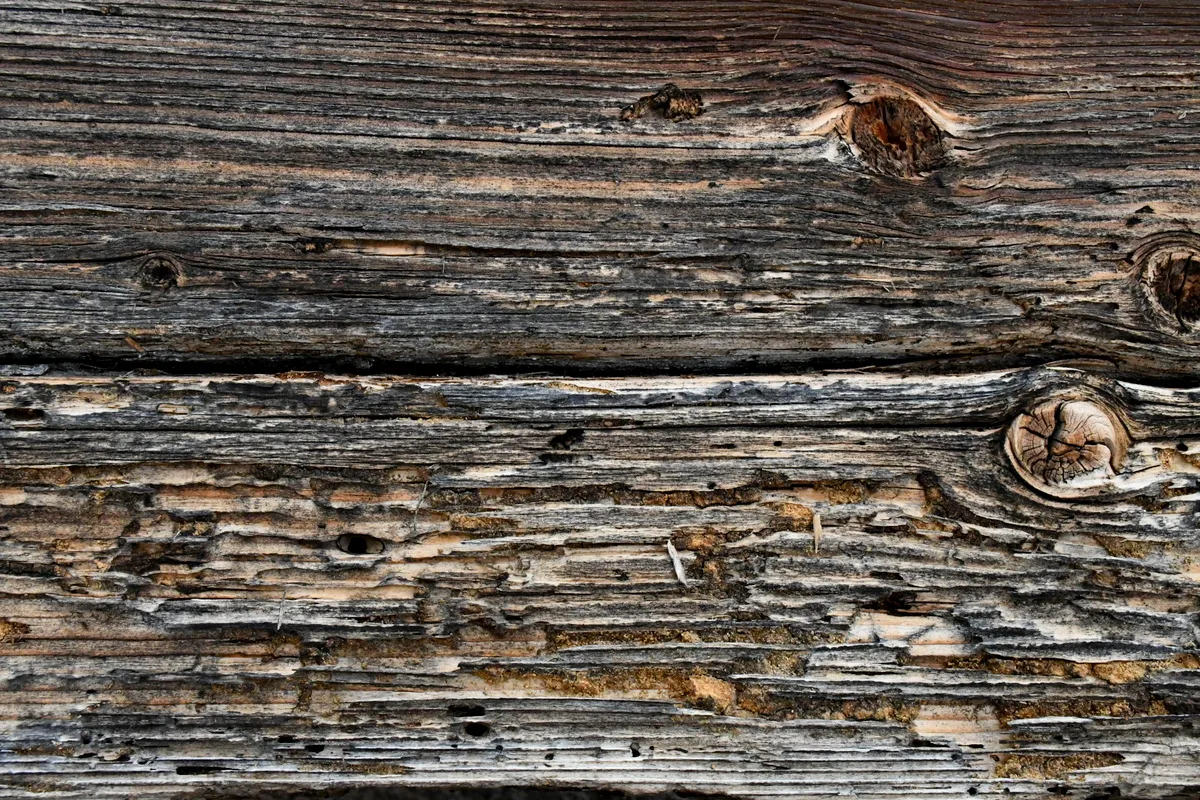
That’s one of the downfalls of wood. Now, you could go with pressure-treated lumber, yet if you are trying to avoid chemicals and toxic preservatives, other options will suit your environmental ethics better.
Another thing you may have trouble with, depending on your location, is insect infestation.
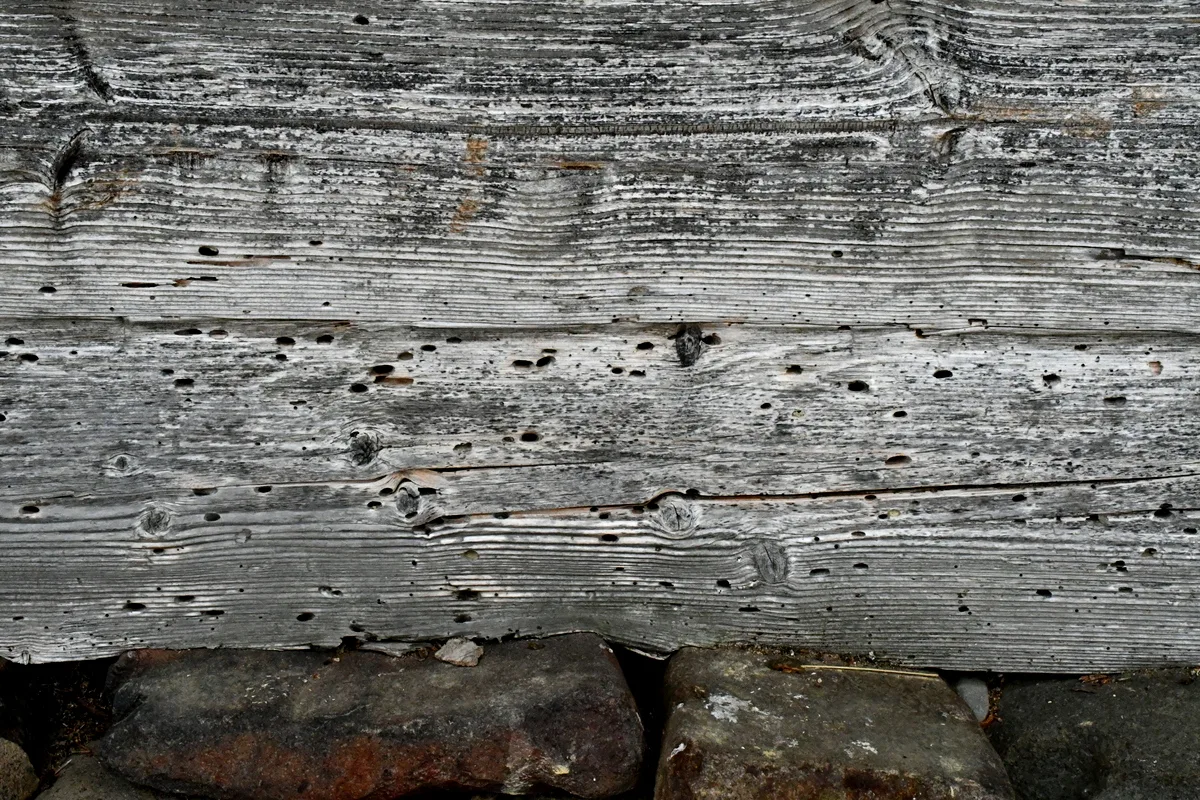
As far as assembly time goes, I can only say that many hands make light work. Take some inspiration from the Amish communities and get a bunch of hardworking people together, and time won’t even be an issue.
Oh, then there’s the price. Expect to pay much more for a wood garden shed. In the end, it’ll be worth it.
Plastic sheds for ease of moving and convenience.
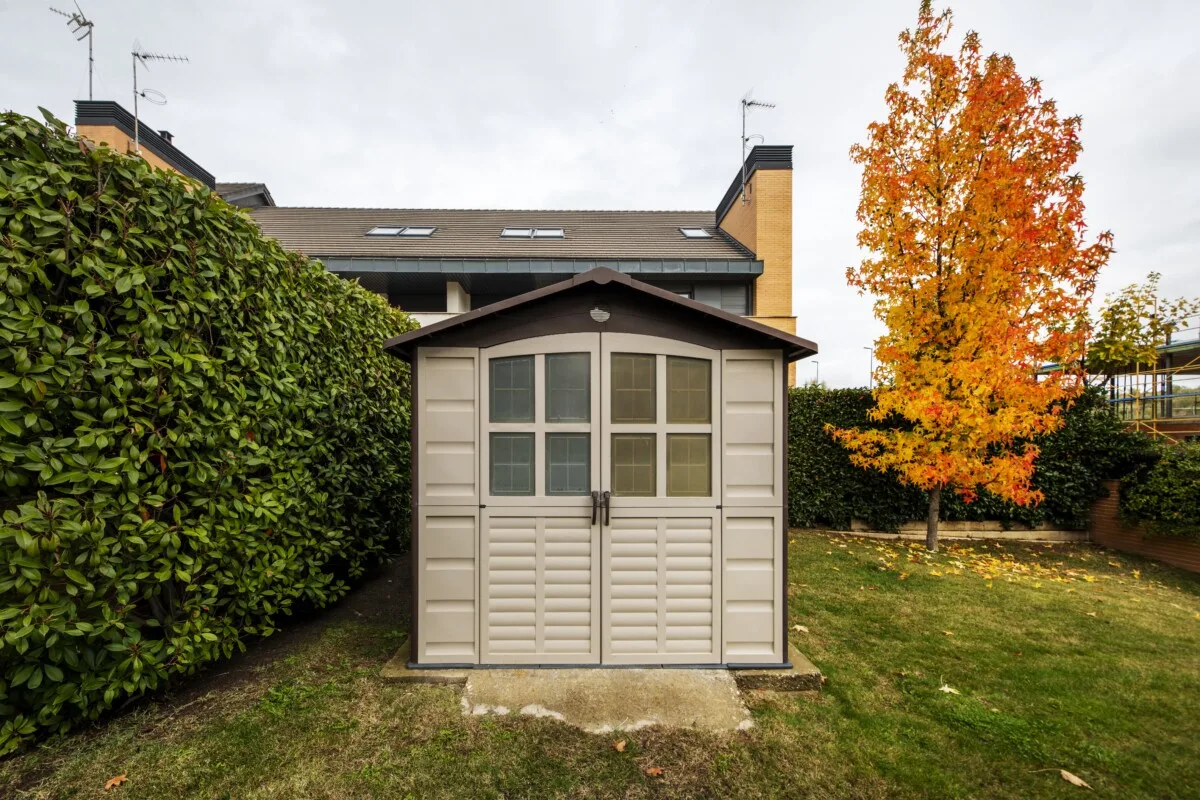
If you are renting or unsure of your long-term plans, plastic garden sheds are a viable option for storing your tools outside of the garage.
Plastic garden sheds are often less expensive than metal sheds, and far more mobile in the off-chance that you need to move and want to take your shed with you.
They get bonus points because they are easy to clean; simply hose them down when necessary. At the same time, rot and moisture are never a problem. Plus, they tend to be easy to assemble.
Downfalls to plastic sheds.
The biggest downfall of plastic sheds is that while they are sturdy to some extent, they aren’t the best option for areas with hurricane and tornado-induced high winds. It also goes, hopefully without saying, that they would be easier to break into.
If guarding your tools is absolutely necessary, something stronger would be my best bet.
Your plastic shed may also falter in cold temperatures and really hot ones. So they really are location-specific.
Does Your Garden Shed Need Electricity or Running Water?
In most instances, the answer will be no. Smaller sheds require nothing of the such.
When you get into larger-sized sheds, some source of light may be necessary. There could be times when you need to start your gardening chores early, let’s say, watering your vegetables, or working later into the evening pulling weeds. Of course, you could use a flashlight; we’ve been known to do that a time or two; it all depends on convenience.
And water? Well, if your garden shed is in close proximity to your garden, then you may want to have a water line installed, for watering the vegetable patch or irrigating a nearby greenhouse.
Be sure to think about electricity and plumbing {before} purchasing the materials or kit for a garden shed. It will save you money, time and hassle later on.
Does it Take a Permit to Build a Garden Shed?
This is something you’ll need to take into your own hands with your local permit or zoning department. That being said, if it’s the second shed on your property, you want to install electricity or running water, or you simply need a larger space to store your garden tools, be sure to find out what building or zoning permits you need before spending a dime.
Every state has different building laws and codes. Always contact your local county or city zoning department before breaking ground.
A couple more items to consider as you finish up your last gardening chores of the evening – do you need locks on your shed’s doors and windows? Can you add your new outbuilding to your home insurance policy? Better be prepared, for gardening season will soon be upon us, and you have every right to protect your investment.
Even if it takes a lot of tools to cultivate your gardening dreams, I know you wouldn’t have it any other way. Go, now, and confidently choose the best garden shed that’s right for you.

Get the famous Rural Sprout newsletter delivered to your inbox.
Including Sunday musings from our editor, Tracey, as well as “What’s Up Wednesday” our roundup of what’s in season and new article updates and alerts.

